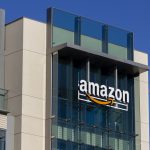The Business Shifts That Will Redefine 2026: Why Everything Is About to Change
Businesses step into 2026 facing a landscape that feels unfamiliar, faster and more demanding than anything seen in the past decade. Conversations within boardrooms now revolve around resilience, automation, workforce transformation and a new kind of consumer who expects brands to respond instantly and deliver with precision. Many leaders who thrived in the old environment are realising that the pace of change is no longer cyclical, it is continuous.
Companies that once relied on steady growth patterns are preparing for a year where agility becomes the new currency. The organisations that thrive will be the ones that understand people as much as they understand technology, a shift that blends financial discipline with emotional intelligence in a way that feels entirely modern. According to analysis reviewed by CEO Today, the businesses already acting on these changes are widening the gap between themselves and slower competitors, creating a two-speed economy where adaptability is rewarded and hesitation is punished.
The Rise of Automated Enterprise Intelligence
Automation moves into a new era in 2026 where businesses no longer adopt tools in isolation. Instead, companies use connected systems that anticipate problems, adjust workflow loads and identify emerging revenue opportunities with minimal manual oversight. These systems create operational structures that are lean and constantly learning, giving leadership more clarity on spending and risk. While automation once sparked fear of displacement, it now becomes a growth engine that opens new types of roles centred around strategy and quality control.
With customer expectations escalating, businesses depend on automated intelligence to maintain consistency. Supply chains adjust to real time demand and customer service platforms deliver personalised responses that feel human without draining staff resources. By adopting these systems early, companies reduce labour strain while increasing margin stability, giving them a competitive edge during uncertain market cycles.
Consumer Behaviour Changes That Force Entire Industries to Adapt
The consumer landscape in 2026 is shaped by people seeking stability, transparency and brands that reflect their values. Spending patterns shift towards quality and long term durability, pressuring companies to rethink product life cycles. Industries that once relied on frequent upgrades now focus on trust driven relationships that strengthen brand loyalty.
Digital fatigue also begins to influence purchasing decisions as more consumers favour experiences with emotion, meaning and tangible connection. Businesses respond by integrating personalisation into physical and digital experiences, creating touchpoints that feel intuitive and rewarding. Companies that fail to adapt face lower repeat business and a decline in brand engagement, especially among younger demographics who expect seamless blending of technology and human experience.
Workforce Evolution and the New Career Mindset
Work in 2026 is defined by a renewed focus on personal wellbeing and flexibility. Employees prioritise roles that offer autonomy, growth and stability, forcing organisations to redesign expectations around hours, leadership style and career pathways. Hybrid structures become more sophisticated, allowing companies to operate with distributed teams while maintaining strong cultural foundations.
Performance metrics shift toward output and creativity rather than time spent online. Businesses that embrace this approach benefit from reduced turnover and higher motivation, while those that resist face costly hiring cycles. The new workforce values leadership transparency more than ever, creating an environment where authenticity is essential for retention. The companies that commit to this shift enter 2026 with a stronger employer brand and enhanced productivity levels.
The Wealth Creation Window: A Financial Shift Consumers Cannot Ignore
One of the most significant changes in 2026 is the rise of micro-investing and financial participation across younger consumers. The barriers to wealth building fall rapidly as platforms simplify complex financial products and democratise access to markets. This shift creates new revenue streams for businesses in finance, technology and retail who adapt to support this growing appetite for financial empowerment.
A major factor behind this shift is the tightening gap between traditional savings returns and inflation. Consumers search for smarter ways to protect their future, leading to a noticeable surge in alternative assets and tech-driven financial planning tools. Many platforms report increases in user activity that indicate a deeper commitment to long term investing, not just short term trading.
Businesses responding to this shift are building products that support micro earning, automated saving and fractional ownership. These features help users participate in wealth creation with minimal upfront cost, making investing more accessible than previous generations experienced. This financial movement grows quickly because it speaks to a wider cultural change where individuals want control, clarity and confidence in their financial futures.
A practical example comes from companies that allow users to invest rounded-up spare change or provide personalised portfolio recommendations within seconds. These services lower the entry barrier and create a continuous feedback loop that keeps consumers engaged. This shift holds powerful implications for businesses, especially those that adapt early and capture a share of this expanding market.
What Readers Want to Know Next
How will automation affect job opportunities in 2026?
Automation enhances productivity and minimises repetitive tasks, allowing employees to focus on creative and analytical work. The shift opens new career paths in oversight, innovation and strategic planning. Companies that adopt automated systems responsibly often experience higher job satisfaction levels because roles evolve rather than disappear. This transition benefits both workers and long term business growth when implemented with training and transparency.
Why are consumers spending differently in 2026?
Consumers move towards value and longevity as economic pressures shape their habits. People want purchases that last, experiences that matter and brands that align with their personal values. Businesses must respond by improving quality, communication and long term product support. Companies that adapt to these new expectations see stronger brand loyalty and higher returning customer rates.
What industries stand to benefit the most from 2026 business trends?
Sectors that integrate smart technology, flexible workforce models and consumer personalisation experience the most growth. This includes finance, health, retail, logistics and digital services. Companies that listen to consumer expectations and embrace innovation gain a competitive edge. Those that delay adaptation face shrinking market share and increased operational strain.














